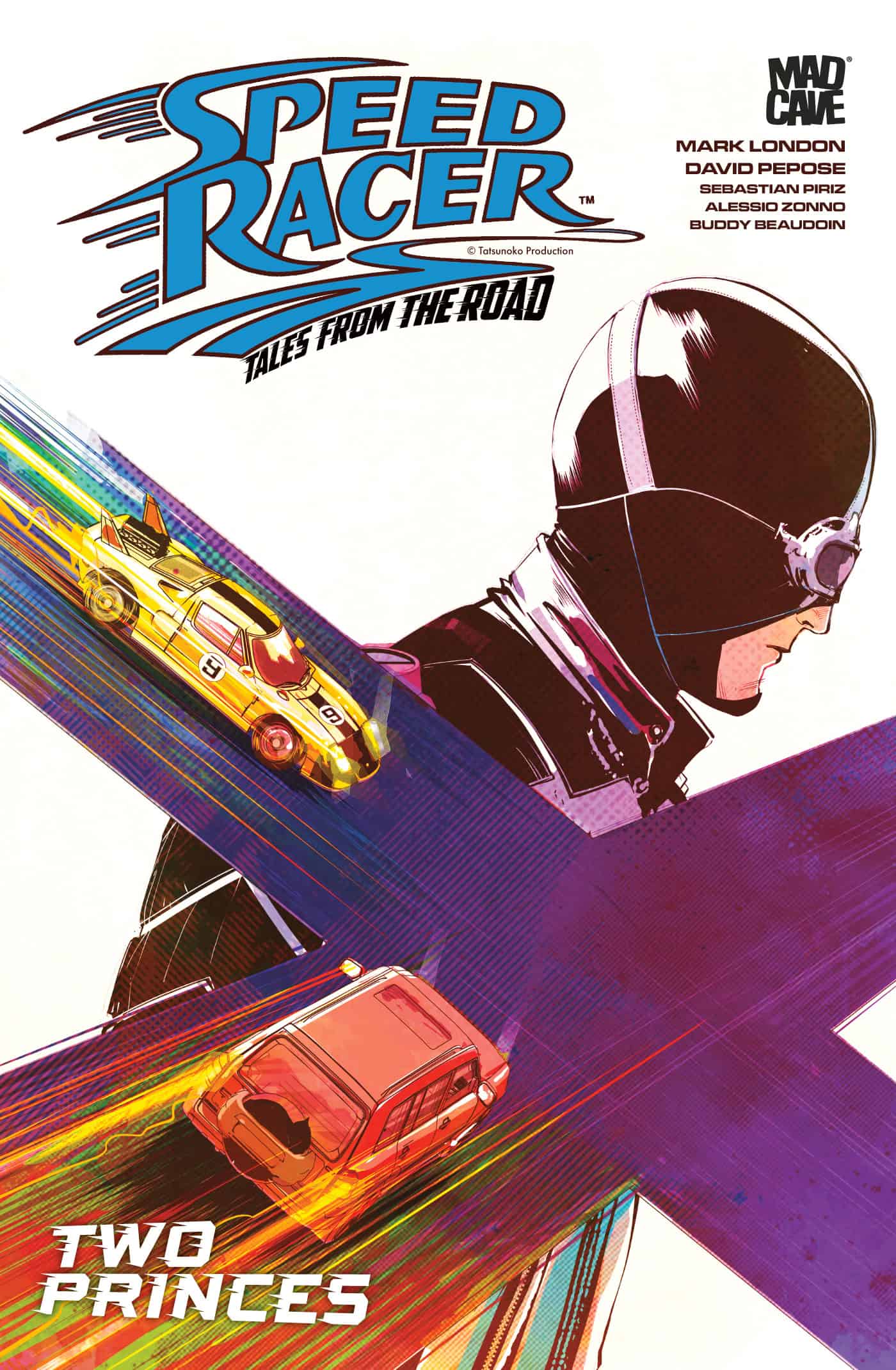Speed Racer: Tales from the Road #1

Recap
Speed Racer: Tales from the Road is an all-new quarterly release featuring one-shot stories that expand the universe of Speed Racer!
Two destinies. One road. Only one can walk away. When Interpol sends Racer X on a mission to take down a brutal warlord known only as the Viking, a deadly chase ignites across a shadowy European city. Packed with brutal hand-to-hand combat, turbocharged vehicular mayhem, and a haunting look at the choices that forge a man, this oversized one-shot dives deep into the past of the masked driver you think you know.
Also a featuring a Spritle and Chim-Chim backup story where they borrow the Mach 5 for the joyride of a lifetime!
Review
Mad Cave Studios’ Speed Racer world continues to expand. Speed Racer: Tales from the Road #1 is the latest entry. It proves to be a good opportunity for Racer X writer Mark London and Speed Racer writer David Pepose to deliver short stories that don’t necessarily fit in their main series.
Speed’s brother Spritle is very much a background character in Speed Racer and often serves primarily as a mood lightener during the series’ more serious stories. Pepose focuses on him here in Speed Racer: Tales from the Road #1’s “Racer’s Day Off.” Not surprisingly, though, the story stays lighthearted. It doesn’t do much to advance Spritle beyond what he is in Speed Racer, but that feels appropriate for a very short story in a one-shot. To the extent that Pepose gives “Racer’s Day Off” any kind of underlying theme, it is Spritle’s desire to see more of the world around him, something made possible when Speed takes the day off from racing and Spritle is able to “borrow” the Mach 5. The lack of a complex theme actually works to the story’s advantage, though. Not every character needs an overly complicated backstory or presentation, and ultimately Spritle works here precisely because Pepose doesn’t dig too deep.
Zonno does a good job capturing Spritle’s exuberance and utterly carefree attitude. Like Pepose, Zonno doesn’t try to imbue the character with any real depth. A wide, exaggerated smile is plastered on to the character in almost every panel. Zonno’s vivid color choices, though not necessarily a choice that creates a light mood on their own, work well here in support of the art. The visuals are ideal for the kind of story that Pepose is telling in Speed Racer: Tales from the Road #1.
London’s Racer X story goes in a very different direction and is profoundly more serious. “Two Princes” is set two years before the events of Speed Racer and tells a story from Racer X’s days as an Interpol agent. His cover has been blown, and the criminal he’s been tracking, Viking, is now tracking him. “Two Princes” is reasonably exciting on its own with multiple games of chicken and repeated exchanges of gunfire. The story doesn’t have anything to do with racing beyond Racer X’s choice of car. London’s chief purpose is to develop Racer X via comparison with Viking. He juxtaposes the two characters, giving them similar pasts from which they made radically different choices. It’s an effective means of development, especially given Racer X’s at times less than sympathetic behavior.
Aside from the brief sequences comparing Racer X and Viking, “Two Princes” is very light on text. Píriz is left to communicate much of the story with art alone, and he is more than capable. Art in “Two Princes” is relatively low on detail when it comes to character appearance. Píriz gets a lot of mileage out of characters’ mouth shape and the hints of shadow around them when it comes to conveying expressions. Background detail is also minimal, in several cases to the point of there being no background at all. Action sequences are another matter entirely, though. Píriz depicts movement particularly well, and the car sequences feel fast and energetic. And perhaps paradoxically, the soft, warm, and low contrast color palette Píriz chooses gives the story a more serious undertone.
Beaudoin’s lettering stands out especially in “Two Princes” where the text is so minimal. Sound effects make up a significant portion of that text, and Beaudoin’s use of larger and frequently rough edged fonts fit in with the intense action. Beaudoin’s color choices align well with the palette Píriz uses and thus makes the sound effects feel very much a part of the art as opposed to a separate component.
Final Thoughts
London and Pepose approach Speed Racer: Tales from the Road #1 quite differently. While neither story is a must read when it comes to following the events in their two series, Racer X’s “Two Princes” is very informative while Speed Racer’s “Racer’s Day Off” is a fun romp. Taken together, though, they do provide a nice balance. So while Speed Racer: Tales from the Road #1 isn’t an ideal issue for new readers, it does make for a satisfying entry in the larger Speed Racer world.
Speed Racer: Tales from the Road #1: A Pair of Great Stories
- Writing - 8.5/108.5/10
- Storyline - 7.5/107.5/10
- Art - 8/108/10
- Color - 7/107/10
- Cover Art - 7.5/107.5/10





